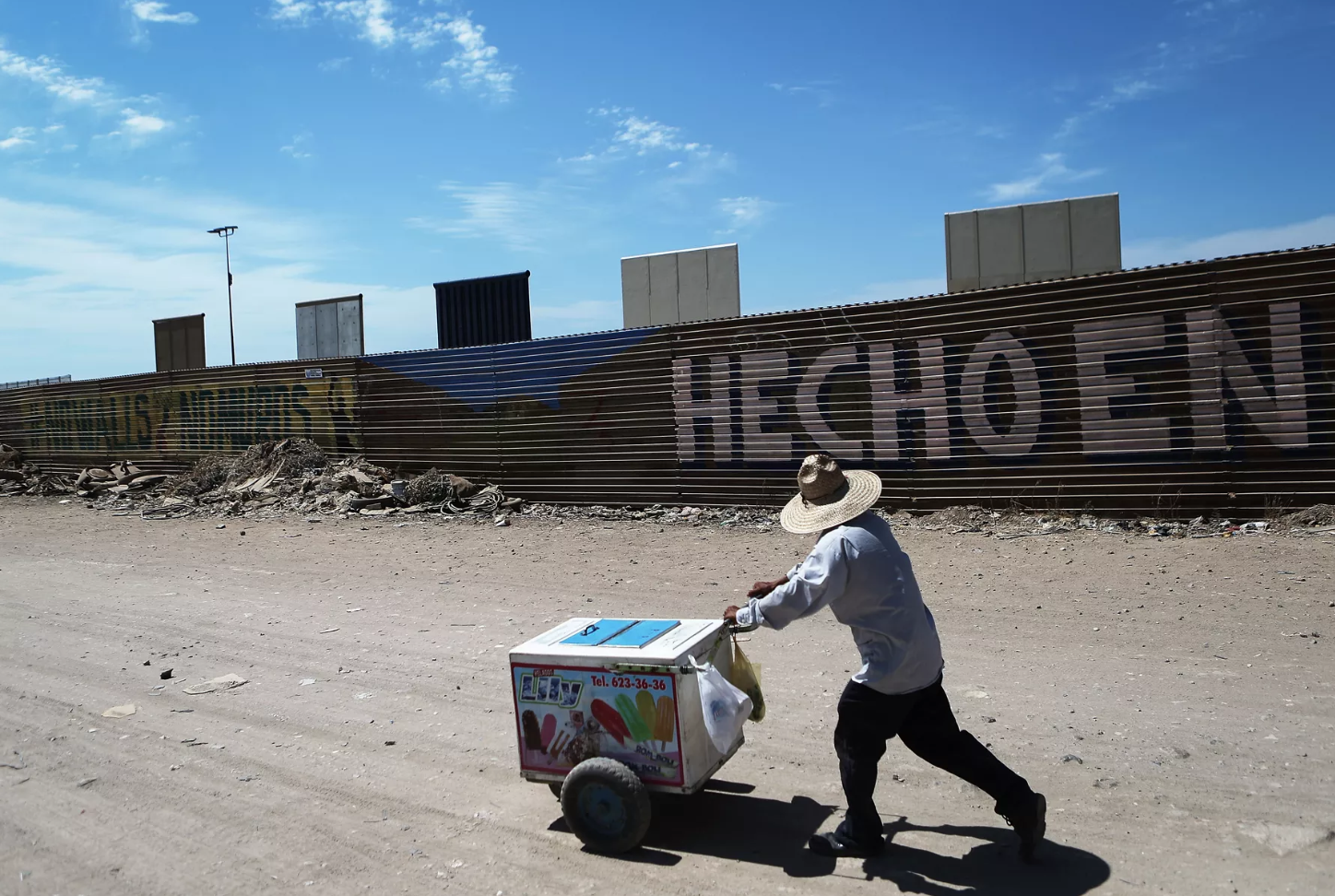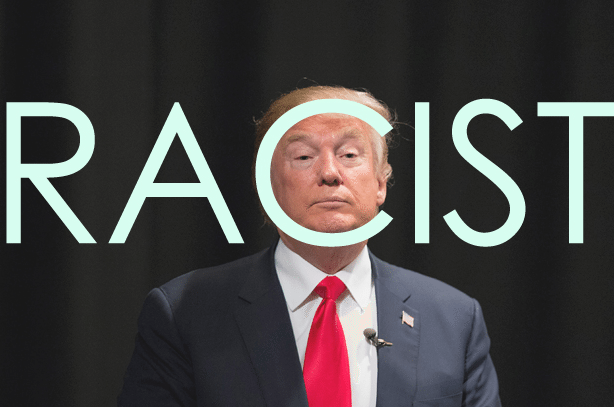Vox: What’s actually happening at the US-Mexico border, explained
Source: Vox – Confluence Daily is your daily news source for women in the know.
Beyond rhetoric and rebuttals, here’s what you need to know.
President Trump wants you, and everyone else in America, to believe that the US-Mexico border isn’t just in trouble but in crisis.
The fundamental premise of the government shutdown is that the US-Mexico border is so dangerous to human life that it is worth shutting down whole swaths of the federal government, forcing 800,000 federal employees to miss paychecks, in order to address it.
And, of course, the way to solve the crisis, Trump argued in a speech at 9 pm Eastern Tuesday, is to give the federal government $5.7 billion to build about 250 more miles of physical barrier along the border.
Most of Trump’s claims about the border are fever-dream fantasies that people who actually live there don’t recognize. But some of them have grains of truth: In one respect — the number of children and families entering the US — what we’re seeing is genuinely unprecedented.
Still, a shutdown-worthy crisis, much less a “national emergency,” is a rare and dire thing. A crisis may require immediate attention and a national debate to determine the best course of action, but it may not require that everything else grind to a halt. And not everything that is going wrong, or less than perfectly, is a crisis.
This is the most important thing to remember about the US-Mexico border and the Trump administration’s claims about it. Even if you believe that no one should come to the US without papers, or believe that too many asylum seekers are released into the country — or, conversely, if you believe the Trump administration’s treatment of children and families crossing the border is a national outrage — that isn’t the same as believing it’s a crisis worth shutting down the government for, or a national emergency worth the seizing of executive power.
To make that judgment, don’t start with what Trump says about the border. Start with what’s true.
1) The border panic has very little to do with what people who live on the border actually see
It’s certainly true that some Americans (though probably not tens of millions) are so worried about gang members and criminals coming over the border to kill them that they are willing to shut down the government over it. But the people who actually live on the border aren’t asking for any of this.
Because Trump has worked so tirelessly to reenforce the theme that Republicans will protect you from criminal immigrants while Democrats will abandon you to them, the easiest way to gauge whether border residents agree is to look at election results.
The 2018 midterm elections — when Trump, ignoring the advice of other Republicans, hammered relentlessly on border security in the last weeks of the campaign — resulted in Republicans losing two seats along the US-Mexico border, one in Arizona and one in New Mexico. In the current Congress, the only Republican representing a district along the border is Texas Rep. Will Hurd, an outspoken moderate on immigration who says his opposition to a border wall is the reason he won reelection.
In fact, as of 2017 (according to the Pew Research Center), people who lived less than 350 miles from the border were the least likely to support Trump’s wall. In other words, the people supposedly on the front lines of what Trump calls a crisis are those least inclined to support the proposed solution to it.
People who live along the border are used to politicians — at both the local and state level — fearmongering about their hometowns. One Texas sheriff spoke out in 2014 to discourage politicians in his state government from hyping the border threat too much — they appreciated the extra money but worried it would hurt their tourism industry. “A lot of tourists will call up to my office and say, ‘Is it safe out there?’” the sheriff, Ronny Dodson, told Chris Hooks at the time. “We’ll ask where they’re coming from. They’ll say ‘Houston.’ We’ll say, hurry up and get out of there! It’s safer here than where you’re coming from.”
The political rhetoric is feeding real fear — among people who live far from the border. But people who live closer to it simply don’t identify with that. That’s an important perspective to keep in mind with regards to not only Trump’s claims about the lawlessness of the border, but also how the American people see this as a crisis someone needs to step in to solve.
2) The US has more than 600 miles of border barriers — and 20-plus years of uninterrupted buildup
The US has been increasing security on its southern border since the 1990s. (Trump’s attorney general nominee William Barr engaged in some of this buildup the last time he was AG, under George H.W. Bush.)
Border Patrol has expanded radically. Wave after wave of surveillance projects have been thrown at the border in the hopes of spotting every person or thing coming over. And across 650 miles of the border, even before Trump got into office, there was some form of physical barrier — from Vietnam-surplus landing mats to the steel bollards, or “slats,” Trump now favors for his wall as well.
Physical border barriers first came into use in urban areas, like San Diego and El Paso, where it was hard for Border Patrol agents to spot and catch people who crossed without papers. They’ve since expanded to other areas where large numbers of people might cross in an effort to deter easy crossings.
Some activists and progressives refer to the buildup at the border as a “militarization,” and there’s something to that — living on the border means being subject to roadside checkpoints, surveillance, and (sometimes) a fence through your backyard. Before Trump, both Democrats and Republicans were eager to increase border security at the drop of a hat. The effect (along with the related phenomena of violence on the Mexican side of the border) has been a transformation of border communities from cross-border exchanges to citadels.
When he was running for president, Trump had a ready rebuttal to this: He wasn’t just talking about a fence, but a real, honest-to-goodness wall. But after two years of actually being president, and having an administration that knows what’s feasible to construct and what Border Patrol agents actually prefer, his administration is exclusively building barriers out of steel bollards — the construction style that was the gold standard for barrier construction even before Trump.
Trump can continue to call it a “steel wall,” but what his administration is really proposing is updating and expanding an existing system of barriers, not creating a thing that hasn’t been there before.
3) In historical context, illegal border crossings are way down
The federal government doesn’t try to estimate how many people successfully cross into the US without papers, undetected. What it does — and has done for more than half a century — is use the number of migrants its agents catch trying to enter the US between ports of entry as a proxy for how many, overall, must be trying to get through.
By that measure, the security of the US-Mexico border in fiscal year 2018 (which ended on September 30 of last year) was comparable to the early 1970s.
Unauthorized migration to the US was already on the decline before the Great Recession — probably in part because the US government started formally deporting people instead of simply turning them back, making it harder for someone to try to enter the US several times in a single year. But the recession all but killed it.
The Trump administration doesn’t present things that way. It talks about patterns of the past decade (where crossings have been roughly comparable) or simply compares 2017 to 2018. That makes 2018 seem like an alarming increase. But the reality is that 2017 was an abnormally slow year for border crossings — in part, researchers suspect, because the fear of a Trump presidency delayed some people from taking the trip.
Since numbers started ticking back up in early 2018, the Trump administration has been in a near-constant state of panic over the border. It’s the result of a bad baseline — and unreasonable expectations.
4) We are seeing unprecedented numbers of families and children coming to the US without papers
Just as important as the change in how many people are crossing into the US between ports of entry is a change in who is doing it.
Over the past several years, adults traveling with children — and children traveling alone — have made up an ever-increasing share of people apprehended at the border. (Often, “apprehended” means the migrants seek out a Border Patrol agent and turn themselves in to ask for asylum.)
The government has only been keeping separate statistics on apprehensions of families and children since 2012. The numbers we’ve seen in the past few months are a record for that (brief) period — even outpacing the peak of the “border crisis” in June 2014.
And while it might be hard to imagine that more families and children are coming to the US now than were in 2000 — when overall apprehensions were four times greater — experts say that’s exactly what’s happened. A 2017 report from the government’s Office of Immigration Statistics estimated that children and families made up less than 2 percent of border crossers during the 2003-2008 period. For the past few months, they’ve made up more than half of all apprehensions.
There are multiple reasons for this. The collapse of the unauthorized labor influx incentivized smugglers to find new markets. And they had some ready new markets in the people of the Northern Triangle of Central America (El Salvador, Guatemala, and Honduras), who were desperate to leave gang violence and poverty. Meanwhile, adults who had already settled in the US wanted to bring the children of their family to live with them.
The result isn’t just that more of the people who are coming are children and families, but that, by the numbers, more children and families are coming than ever before. More than 150,000 children or family members were apprehended by Border Patrol in fiscal year 2018. That’s nearly 10 percent of the overall apprehensions in 2000 — and we have no reason to believe that children and families actually made up 10 percent of what used to be a migration of single adults.
:no_upscale()/cdn.vox-cdn.com/uploads/chorus_asset/file/13677589/1068994044.jpg.jpg)
5) The Trump administration is tragically unequipped to deal with the families and children coming in now
The US’s border infrastructure isn’t designed to take care of families or children. But that’s the role it’s been forced into. And the results have been tragic.
Customs and Border Protection Commissioner Kevin McAleenan told the Senate Judiciary Committee in December that “the infrastructure is not compatible with the reality” of who is getting apprehended — essentially admitting that his agency was ill-equipped to take care of the people currently entering the US.
Border Patrol doesn’t even have the standards for detention conditions that Immigration and Customs Enforcement has — because Border Patrol isn’t supposed to be detaining anyone for any meaningful amount of time. The problem, of course, is that the times families are being held by Border Patrol for days on end are the times when the rest of the system is already overloaded and in crisis.
Before December 2018, it had been a decade since any child had died in the custody of Border Patrol (or its partner division, the Customs and Border Protection Office of Field Operations, which deals with ports of entry). In December 2018, two children did.
The death of Jakelin Caal Maquin on December 8 has raised questions about Border Patrol’s responsiveness to medical needs and its capacity to deal with medical emergencies in remote areas of the border. The death of Felipe Alonzo-Gomez on Christmas Day has raised separate questions: about why a child was held in Border Patrol custody for six days before ICE was even asked to find a spot for him and his father, and about why he was shuffled between four facilities — including being taken from the hospital to a cramped highway checkpoint.
When it can no longer hold so many families in custody, the federal government has sometimes turned them out en masse without warning — as ICE did to several hundred families in El Paso before Christmas — leaving them in an unfamiliar country with a tight deadline to make it to their next immigration check-in.
At ports of entry, where it is legal to cross without papers if you wish to seek asylum in the US, some officials have told families to wait, or turned them away to come back later, in a semi-official policy known as “metering.” Metering has increased the incentive for families to cross between ports of entry illegally.
Democrats and progressives accuse the Trump administration of boxing itself into this resource crunch by detaining massive numbers of people (including families) to begin with, and argue that Border Patrol agents would be less overwhelmed if there were more capacity and willingness to process asylum seekers legally at ports. The administration, for its part, argues it’s doing everything it can and simply doesn’t have the resources it needs to provide humane care.
6) The “problem” of asylum seekers isn’t something that a wall can fix
It might be fair to call the current situation at the border a “humanitarian crisis.” But it isn’t why Trump shut down the government. And it isn’t something a wall can fix.
The point of walls is to prevent people from crossing into the US undetected. That’s not what most of the families and children who are crossing are doing. They’re turning themselves in to the nearest border agent they see on the US side.
Not all of them, but a large share, are seeking asylum — seeking to live legally in the US. That’s something they have a legal right to do even if they crossed illegally — and it’s something they could do at a port of entry even if there were a wall across the entire border.
The Trump administration’s specific problem with the influx of asylum seekers isn’t that it isn’t catching them — it’s that it can’t quickly deport them, and can’t detain them for the entire time until they are deported, because of extra legal protections for asylum seekers as well as for children and families. (The administration calls these “loopholes” that create a policy of “catch and release.”)
To Trump and his administration, “catch and release” is a crisis — because it means that large numbers of people are released into the US on their own recognizance, many of whom don’t make it all the way through the asylum process or ultimately have their asylum claims denied.
The administration has long agitated to overhaul the law to close these “loopholes,” over strident objection from Democrats. Whether “catch and release” is a crisis is a matter of discussion. Whether a wall would address it is not.
:no_upscale()/cdn.vox-cdn.com/uploads/chorus_asset/file/13677599/1056129264.jpg.jpg)
7) There is no evidence of a terrorist crisis at the border
The Trump administration’s efforts to claim that thousands of terrorists or potential terrorists have tried to cross into the US have been roundly mocked and debunked. NBC found that a total of six known or suspected terrorists were caught trying to come to the US in the first six months of 2018.
To a certain extent, the administration is (either carelessly or mendaciously) conflating “known or suspected terrorists” with “special interest aliens” — migrants who automatically get additional screening because of factors they might have in common with terrorists. One of those factors is “travel patterns” — in other words, being a “special interest alien” might just mean that one visited for, or is from, a country that the US considers friendly to terrorism. Even the Trump administration, which has banned nationals of several countries for similar reasons, isn’t claiming that everyone affected by the “travel ban” is a terrorist.
But the debunking of the administration’s specific numbers about terrorism at the border kind of misses a bigger point: that this whole conversation is about the typical vetting and screening process people undergo to enter the United States, and the number of people “caught” are the ones successfully identified.
There is no reason to assume that catching more potential “terrorists” means that more of them are slipping through. To the contrary, improving a vetting system should mean that (in theory) more people are being caught because fewer are slipping through.
On a very broad scale, it is true that perfect antiterrorism defense would require literally zero unauthorized border crossings. But that’s not the same as arguing that there is an imminent terrorist threat. And the way the administration talks about terrorism just isn’t related to the things it wants to do.
8) The border drug issue is about insufficient screening at ports
Similarly, Trump likes to characterize the border as a haven for drug smuggling, going on flights of fancy about drones or “sacks of drugs” hitting agents on the head.
It’s true that a lot of drugs consumed in the US come in via the border with Mexico. But the majority of them, consistently, come into the US at ports of entry — official border crossings. A wall would have no impact.
The Trump administration is actually working to address this problem, by scanning more vehicles at ports. In fact, its official offer to Congress to end the shutdown included $675 million for vehicle-scanning technology — though Vice President Pence said the request came from Democrats in Congress.
Building a wall probably wouldn’t cause more drugs to flow into the US. But that doesn’t mean building one is a national imperative.
9) Walls work — to direct people to cross somewhere else along the border
:no_upscale()/cdn.vox-cdn.com/uploads/chorus_asset/file/13677601/930356616.jpg.jpg)
The Trump administration likes to cite statistics from areas where barriers have already been built, followed by a drop in apprehensions of unauthorized immigrants.
That’s how it’s supposed to work — because the wall was designed to get them to go somewhere else.
The purpose of physical barriers is what border agents call “funneling” — pushing people to cross where they can be more easily apprehended by Border Patrol.
That funneling can be helpful to ensure that Border Patrol agents catch as many people as possible, or to focus them on tracking more sophisticated criminal efforts.
But that doesn’t mean that you can reduce the overall number of people coming into the US by building as much wall as possible.
There is some evidence that previous border security buildups have succeeded in deterring some migrants from coming to the US over the past decade (though some scholars argue that the Great Recession played a bigger role). There’s even more evidence that it’s deterred people who were caught once from trying to cross a second time.
But it’s not clear whether that’s an indication that the US could be even more effective with even more enforcement, or that the government has already picked the low-hanging fruit.
The people still coming to the US without papers are, increasingly, what are sometimes referred to as “non-impactables” — people who can’t be affected by the harshness of the typical immigration enforcement regime. Children and families from Central America are coming despite a journey that is often dangerous, and coming despite the possibility that they might not make it. It’s hard to deter people who are already so desperate.
By
Confluence Daily is the one place where everything comes together. The one-stop for daily news for women.





